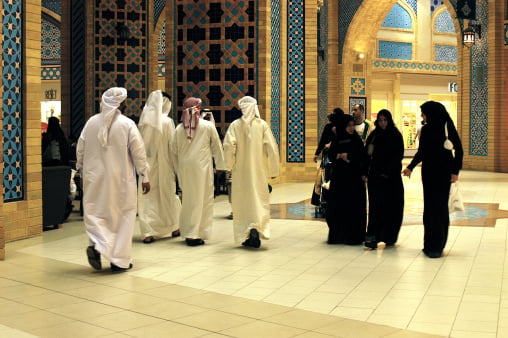Qatar and UAE close gender gap but rank poorly worldwide
Gulf economies were the worst performing in the high income group in this year’s index

Several Gulf nations improved their gender equality in this year’s Global Gender Gap rankings by the World Economic Forum (WEF), but still remained in the bottom half of the table.
The annual index measured 144 countries for gender equality based on economic participation and opportunity, education attainment, health and survival and political participation.
This year’s edition saw the Middle East and North Africa region close its overall gender gap by more than 60 per cent but it continued to rank last globally in the overall index.
Among the best performers in the region were Qatar and the UAE, having each closed approximately 64 per cent of their gender gap.
However, the five Gulf countries stood at the bottom of the high-income table when countries were split into four sub indexes based on average income.
In the Gulf region, Qatar was the best performing country at 119th after narrowing its labour participation gender gap this year.
The UAE stood second at 124th after improvements in women parliamentarians and wage equality. The country also came very close to closing its gender gap on the educational attainment subindex.
This followed the formation of a new council last year to boost the role of women in the economy.
Read: Sheikh Mohammed Forms New Council To Address Gender Gap
Kuwait ranked 128th and saw solid progress on women’s labour force participation, according to the WEF.
While Bahrain took 131st after a decline in its share of female professional and technical workers and a larger gender gap due to the index’s revised scale for calculating estimated earned income.
Oman at 133rd narrowed its gender gap with increased wage equality but saw its primary and secondary education gender gap re-open.
Meanwhile, Saudi Arabia (141st) was particularly highlighted for its declining performance this year with its gender gap widening across the economic participation and opportunity subindex, especially relating to earned income.
The kingdom also saw its primary, secondary and tertiary education enrolment gender gaps re-open.
“More positively, it has recorded the region’s largest improvement on the overall index over the past decade, as well as the second largest improvement on economic participation and opportunity globally,” according to the WEF. “On educational attainment, it is the fifth-most improved country in the world.
Leading the global gender gap ranking this year was Iceland, followed by Finland, Norway, Sweden, Rwanda, Ireland, the Philippines, Slovenia and New Zealand.
Yemen, Pakistan and Syria stood at 144th, 143rd and 142nd respectively.
